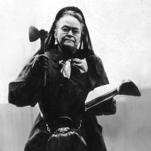Tasting: All 5 Whiskeys of the Buffalo Trace Prohibition Collection (Bourbon, Rye)
Photos via Buffalo Trace, Sazerac Co.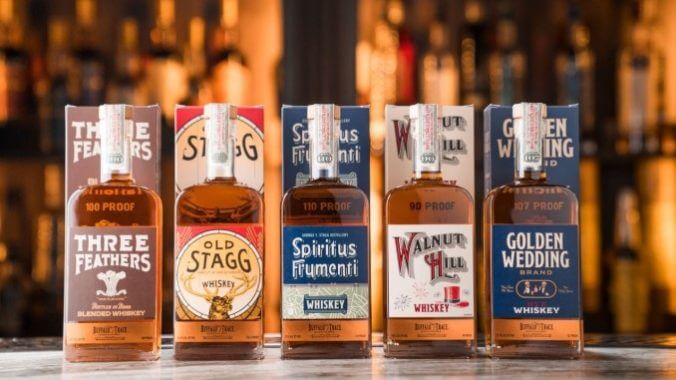
Any time that Sazerac Co.’s Buffalo Trace unveils a new limited edition whiskey, that’s big news for the spirits world. An entire collection of limited edition bourbon, rye whiskeys and blended whiskeys, on the other hand? That’s another level entirely. It’s safe to say, then, that the recent announcement of the Buffalo Trace Prohibition Collection sent some shockwaves through the whiskey geek fandom, not only for the chance to experience brand new BT expressions, but for the collection’s sky high $1,000 MSRP. Granted, this box set includes five bottles (375 ml each), but that’s still a tremendous price point that reflects both the zeal of the bourbon boom and the effects of inflation and hype on the whiskey world.
The theme of the Buffalo Trace Prohibition Collection, as the name would no doubt imply, is to reinvent old brands associated with the distillery into limited edition modern revivals. As the company puts it:
From 1920 to 1933, the production, sale and transportation of alcohol was banned in the United States due to the ratification of the 18th amendment to the United States Constitution, an era known as Prohibition. Purchasing alcohol was only legal with a medical prescription. At the time, many doctors believed spirits to be a cure for a wide variety of ailments. As such, the U.S. Government granted licenses to six distilleries to bottle medicinal whiskey: one of those distilleries was the George T. Stagg Distillery in Frankfort, KY. Known today as Buffalo Trace Distillery, it is the longest continually-operating distillery in America.
All of the brands, then, have long historic roots, and none have existed as active whiskey brands in recent memory. We were lucky enough to receive small press samples of the five whiskey brands, so let’s get into tasting each of them, presented here in ascending order by proof.
1. Walnut Hill
ABV: 45% (90 proof)
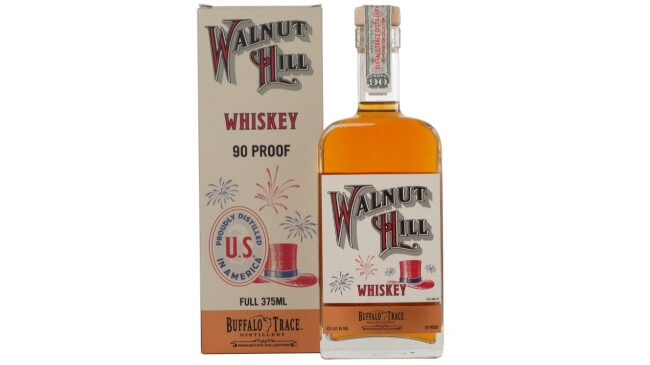
Buffalo Trace says the following about Walnut Hill, a 90-proof, high-rye bourbon brand:
During Prohibition, the George T. Stagg Distillery often bottled brands, like Walnut Hill, for other companies. Our records show the President of the George T. Stagg Distillery, Albert Blanton (who would later have the world’s first single barrel bourbon named after him), overseeing the production of this brand. Notes from his correspondence with the United States Patent Office in December 1932 show his direct responsibility over the bottling of Walnut Hill.
On the nose, Walnut Hill presents light caramel and subtle citrus, with a bit of candied almond and specifically floral rye. On the palate, it features pleasant caramel chew sweetness and sweet oak, along with vanilla bean ice cream and a buzz of herbal rye. A twist of orange pairs with toasty cocoa on the finish. All in all, this is very tasty and expertly balanced, though one has to think that there are probably Buffalo Trace fans/whiskey geeks/collectors out there who would question including any lower proof selections in a limited edition box such as this, one that is carrying a $1,000 MSRP. Regardless, Walnut Hill is very tasty on its own merits.
2. Three Feathers
ABV: 50% (100 proof)
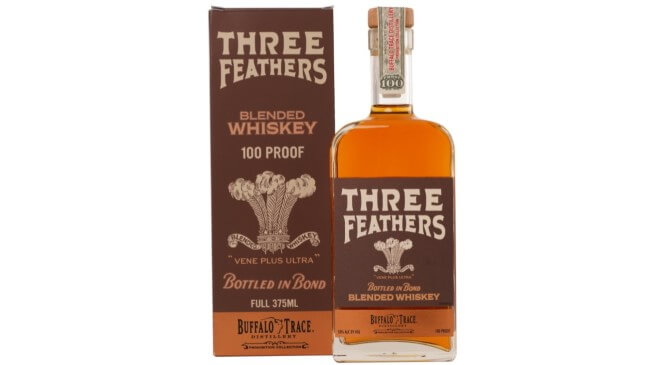
Three Feathers is labeled as a bottled in bond “blended whiskey,” and one has to wonder what exactly that designation means to Buffalo Trace in this specific product. Surely one would think that in such a high-profile limited release, it’s not as if they’re blending this with grain neutral spirits. Perhaps some of the whiskeys involved in this brand have seen some aging in used bourbon barrels? The company says the following:
The earliest reference to Three Feathers indicates it was first made in 1812. Originally advertised as a luxurious rye whiskey, it would later become a bonded whiskey and then a blended whiskey. The three ostrich feathers were chosen as a logo as they were synonymous with royalty in the 1800s; They would later represent the three people involved in creating the Three Feathers blend.
On the nose, Three Feathers displays a distinct corny sweetness, evoking fresh cornbread with honey and caramel. On the palate I’m getting initial honey and charred oak, with a pronounced sweet roastiness evoking espresso and then dark chocolate, into vanilla cream. The ethanol is really effortlessly integrated here, and this makes for one of the easiest drinking 100 proof expressions you’ll ever see. All in all, it’s not really the most complex of the taste profiles in the Buffalo Trace Prohibition Collection, but I do quite like the way its roasty char mingles with its sweetness.
3. Golden Wedding
ABV: 53.5% (107 proof)
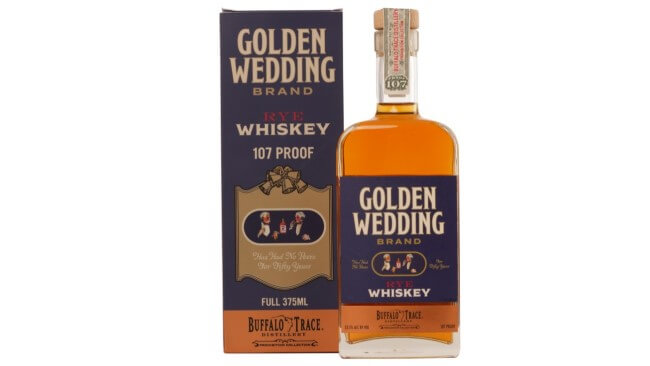
Golden Wedding is the only full-on rye whiskey of the Prohibition Collection, a 107 proof brand that the company describes with the following:
Trademarks for Golden Wedding date all the way back to 1869. During Prohibition, Schenley Distilling Corporation purchased the Joseph S. Finch Distillery, along with the Golden Wedding brand. The brand’s bottling was split between Schenley’s Pennsylvania distillery and the George T. Stagg Distillery. In the late 1940s, the brand was moved to Schenley’s distillery in Canada and would become a Canadian whiskey before it ceased to exist in the late 20th century.
On the nose, Golden Wedding is immediately distinct from the other bottles in this collection, with delicate herbal and floral rye, into anise spice, apple flesh and hints of nutty cocoa or cocoa nibs. Sweetly floral on the palate, this one features honeyed sweetness and lots of herbal rye grain, dill, green apple, pepper and some charred astringency. Golden Wedding features intense rye and floral flavors, with significant sweetness, though this impression is tamped down at the same time by oaky astringency that reins it in somewhat. This is a bold offering that really celebrates the rye grain.
4. Spiritus Frumenti
ABV: 55% (110 proof)
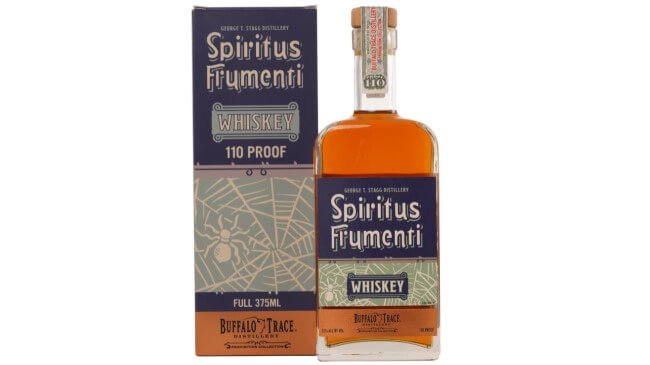
Spiritus Frumenti is a 110 proof expression of Buffalo Trace’s highly sought after wheated bourbon mash bill, meaning that the whiskey collectors will be all over this one–any product with a tangential collection to the likes of Pappy Van Winkle will quickly find itself hunted down, and I wouldn’t be surprised to see secondary market speculators separating this bottle from the rest of the set as a piece of trade bait. Buffalo Trace, meanwhile, describes Spiritus Frumenti with the following:
In the 1800s American apothecaries used “Spiritus Frumenti” to track whiskey in their ledgers. Latin for “Spirit of the Grain” it would later be used as a generic name for medicinal whiskey during Prohibition. Spiritus Frumenti was produced by the George T. Stagg Distillery and other distilleries throughout the 1920s creating many iterations of Spiritus Frumenti.
On the nose, this one features dark honey and mature oak, along with brown sugar, cocoa and moderate cinnamon spice. Its nose also evokes a delicate, oak-driven spiciness as well. On the palate, sweet oak is a major player, with chocolate-covered cherries a very welcome component, supported by peanut brittle and vanilla. A finish of pronounced baking spice, old oak and prickling heat pulls this one together. All in all, this is full of flavor, and you’re definitely starting to feel the influence of the proof point in a more commanding way here.
5. Old Stagg
ABV: 66.2% (132.4 proof)
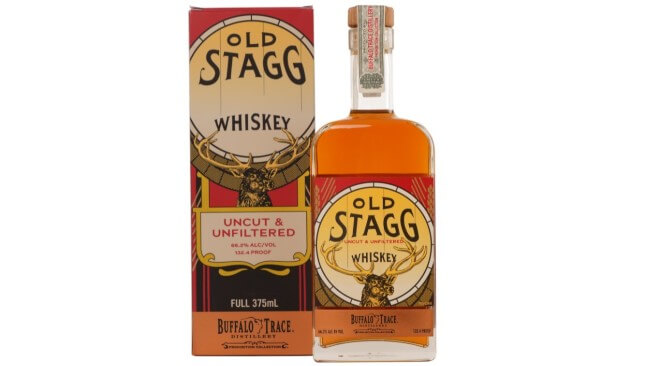
As the one cask strength expression in the bunch, Old Stagg was inevitably going to be viewed by many collectors as the main event of this first release of the Buffalo Trace Prohibition Collection. It notes itself as “uncut and unfiltered,” though notably it doesn’t explicitly label itself as bourbon. The proof point and name, however, make an obvious invitation to compare it to the company’s existing Stagg and George T. Stagg brands. As the company describes it:
Old Stagg would become the flagship whiskey brand for the George T. Stagg Distillery at the tail end of Prohibition, taking the place of O.F.C. bourbon. Made to honor George T. Stagg, who owned and operated the distillery in the late 1800s, the brand would be used in several ads and sales materials in the years after Prohibition. Today, the brand lives on as Stagg and George T. Stagg, both barrel proof whiskeys that have their roots in this Prohibition era brand.
On the nose, Old Stagg revels in bold caramel and sweet oak, with caramelized brown sugar, tobacco, leather and yes, some stinging ethanol that steadily dissipates over time. On the palate, this is full of flavor but actually quite easy drinking for the advanced proof, with loads of brown sugar, vanilla frosting, cherry compote, baking spice, peppery rye, leather and sweet oak. Its lingering, roasty finish moves in the direction of mocha and modest oak tannin, with a bold, charred roastiness becoming especially present on the finish. I must say, it’s a very satisfying dram, particularly for how well integrated the ethanol is in the flavor profile. It’s been a while since I’ve had a 130+ proof whiskey that was quite this friendly.
All in all, there’s no impeaching the quality of the spirits in the bottles of this collection. The BT Prohibition Collection will no doubt be supremely difficult (and pricey) to lay hands on this holiday season, but those who do will likely find themselves enraptured by the whiskey collected here. It will be fascinating to see how subsequent years of the Prohibition Collection as a concept may continue to evolve the idea.
Jim Vorel is a Paste staff writer and resident beer and liquor geek. You can follow him on Twitter for more drink writing.



























